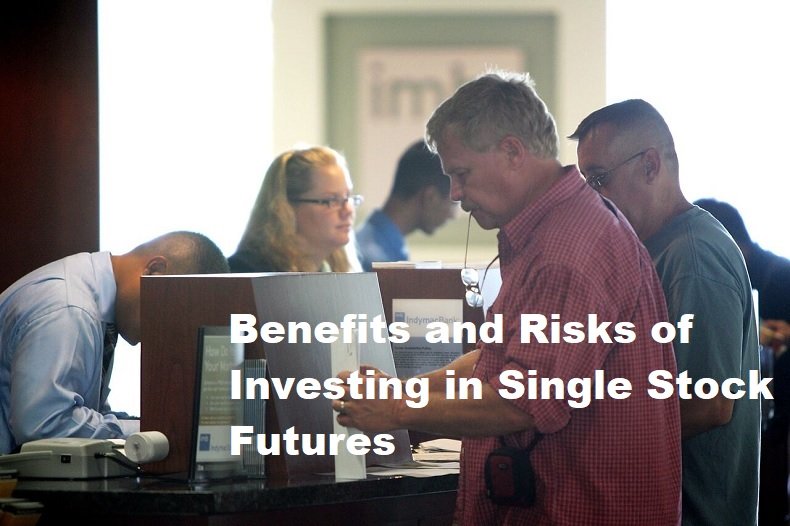Understanding Single Stock Futures (SSF)
Single Stock Futures (SSF) is a derivative instrument that allows investors to gain exposure to share price movements without having to physically own the shares. SSF is a contract between two parties, where one party agrees to buy and the other party agrees to sell shares at a certain price in the future. This instrument is used in financial markets to hedge portfolios or speculate on market movements. The SSF working mechanism involves buyers agreeing to absorb the risk of share price movements, while the seller will receive a premium for this risk. As with other derivative products such as options and futures contracts, SSF allows investors to take short-term or long-term positions based on their analysis of investment prospects over a period of time.
The main difference between Single Stock Futures and other investment instruments such as shares, options and futures contracts lies in the transaction structure and their use. Shares are a form of direct ownership of a company, whereas SSF does not involve ownership of the underlying shares, but simply agreeing on the value at which they will be traded at in the future. In addition, options give the holder the right to buy or sell an asset at a certain price within a certain time, while SSF requires settlement of the contract on the maturity date. Futures contracts are generally traded on regulated exchanges and involve a variety of commodity or financial assets, while SSFs specifically relate only to stocks. SSFs are also more flexible than traditional options and futures contracts because they can be closed before the expiration date. In addition, the leverage provided by SSF is higher than other instruments, allowing investors to generate greater profits with lower capital. However, this also increases the potential risk of loss. However, SSF is an attractive investment instrument for market players who want to take advantage of share price movements without having to physically own shares. Apart from that, SSF can also be used as a hedging tool for investors who have exposure to market volatility. However, it is important for investors to understand the risks associated with these instruments and seek expert advice before investing in Single Stock Futures. In practice, investors must consider their investment objectives, risk tolerance and current market conditions before deciding to invest in SSF.
Illustration of an Example of a Single Stock Futures Transaction
Before making a Single Stock Futures (SSF) transaction, investors need to select the relevant shares and contracts to trade. This process involves in-depth research and analysis of companies, market conditions, and industry trends. Additionally, investors should consider stock liquidity, price volatility, dividends, and other financial aspects before making a decision. One of the main features of SSF trading is the use of margin, which allows investors to trade assets at a higher value than the initial investment. Margin is a percentage of the total value of the SSF contract that investors must provide as collateral. In SSF transactions, investors must make initial assumptions about whether the stock price will move up or down, also known as a long or short position.
After selecting shares and contracts, the process of buying or selling SSF begins. The success of the transaction depends on share price movements that match investor predictions. As time goes by, share prices will experience changes due to external factors such as company news, government policies and market sentiment. When monitoring changes in share prices, investors can respond immediately to suit their investment strategy. When the SSF contract reaches its maturity date or the investor has achieved his goal, the position liquidation process will be carried out. The SSF position will be closed, and the transaction will be settled by calculating the profit or loss arising from changes in share price. The outcome of the transaction depends on how precise the predictions made by the investor are and his ability to manage the risks associated with SSF trading.
Benefits and Risks of Investing in Single Stock Futures
Investing in Single Stock Futures (SSF) can provide various benefits to investors. SSF is a derivative contract that allows investors to take a long or short position in a stock using leverage. The first advantage of SSF is leverage, which allows investors to control a larger amount of shares than they actually own. This can maximize potential profits, while minimizing the amount of capital required. Another benefit of investing in SSF is risk diversification. Risk diversification can be achieved by combining various investment instruments in one portfolio, including SSF. By diversifying, investors will reduce the risk of losses that may occur due to fluctuations in individual share prices or certain sectors in the market. Apart from that, SSF can also be used for speculative purposes. Investors who have predictions or analysis regarding certain stock price movements can use SSF to gain profits from these price changes.
Although investing in SSF offers many benefits, there are also some risks that investors need to be aware of. The main risk is share price fluctuations, as the value of SSF depends entirely on the performance of the underlying stock. If stock prices fall significantly, investors will face greater losses than if they had simply invested in common stocks. This is especially important on SSFs that use leverage, as the amount of potential loss becomes much greater. Lastly, market liquidity risk is a factor that needs to be taken into account when investing in SSF. Market liquidity describes investors’ ability to sell or terminate their SSF positions quickly and easily. If market liquidity is low, investors may have difficulty finding suitable buyers or sellers to settle their positions. In such a scenario, investors may be forced to accept less favorable prices or experience delays in liquidating their positions. Therefore, before investing in SSF, it is important for investors to understand and consider the benefits and risks associated with this instrument. In this case, consultation with an experienced financial expert or market analyst can be very helpful. Additionally, investors should always conduct thorough research and consider their personal risk tolerance before making any investment decisions including SSF.
Regulations and Authorities Overseeing the Single Stock Futures Market
Regulations relating to Single Stock Futures (SSF) trading in various countries generally include rules and guidelines aimed at ensuring market continuity, protecting investors and reducing systemic risk. Some of the key regulations include provisions regarding margins, price transparency, transaction reporting, and licensing requirements for parties involved in SSF trading. Apart from that, regulations also regulate illegal actions such as insider trading, market manipulation, and fraud related to SSF. In many countries, capital market authorities or financial supervisory bodies have an important role in supervising and regulating SSF activities. Basically, this authority was created to safeguard the interests of investors and ensure efficient and fair market integrity for all parties involved. Some well-known regulatory bodies in the world include the Securities and Exchange Commission (SEC) in the United States, the Financial Conduct Authority (FCA) in the United Kingdom, and the Financial Services Authority (OJK) in Indonesia.
Capital market authorities have primary responsibility for ensuring transparency in the SSF market. They must monitor the price of the original shares along with derivative contracts to prevent illegal practices or manipulation. Price transparency is very important in SSF trading because it helps investors make better decisions and increases their trust in the market mechanism. These authorities also establish regulations to govern transaction reporting, with the aim of ensuring that relevant information is easily available to stakeholders. Apart from ensuring transparency, the capital market authority is also tasked with maintaining the integrity and security of Single Stock Futures trading. They must ensure that parties involved in SSF trading meet account opening requirements, have adequate risk systems in place, and comply with internationally recognized business ethics standards. This regulation aims to protect investors from detrimental business practices and maintain trust in the financial trading system.









